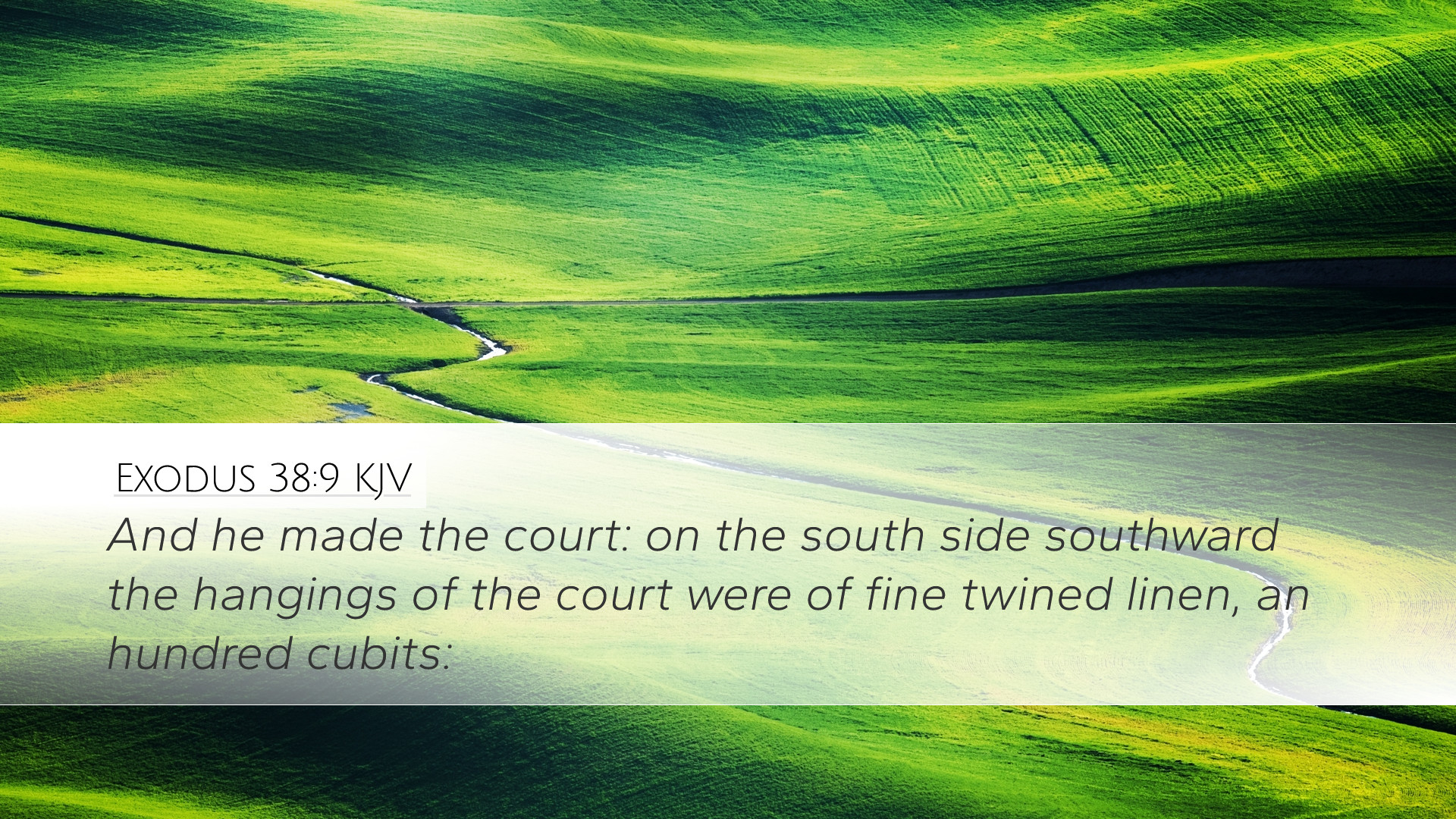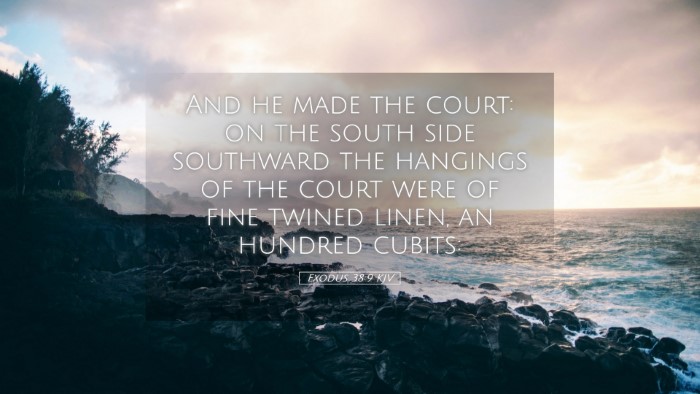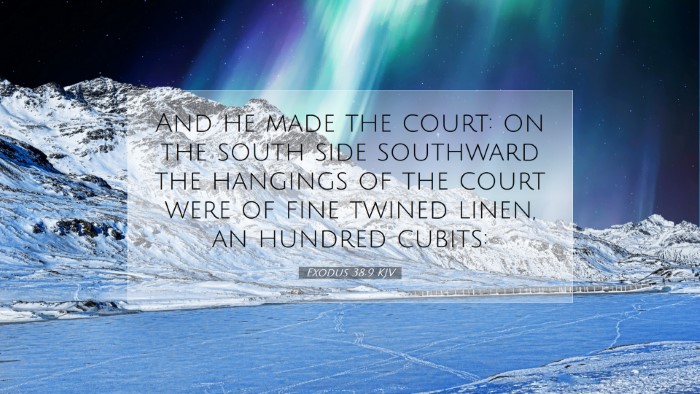Commentary on Exodus 38:9
Introduction
Exodus 38:9 states: "And he made the court for the tabernacle: for the south side southward the hangings of the court were of fine twined linen, a hundred cubits." This verse marks a significant moment in the construction of the Tabernacle, focusing particularly on the outer courtyard. In this analysis, insights will be drawn from respected public domain commentaries, including those by Matthew Henry, Albert Barnes, and Adam Clarke, to provide a comprehensive understanding of this text for pastors, students, theologians, and scholars.
Contextual Understanding
Exodus 38 continues the theme of God’s instruction to Moses regarding the construction of the Tabernacle, which serves as a dwelling place for God among His people. The meticulous details of the Tabernacle's construction emphasize the holiness of God and the required reverence in approaching Him.
Significance of the Court
The court of the Tabernacle, as referenced in this verse, is crucial for worship and the sacrificial system instituted by God. Commentators highlight the following key points:
-
Symbol of Separation:
The outer court creates a boundary, separating the holy activities from the common world. This separation underscores God’s holiness and the need for His people to draw near with proper reverence.
-
Accessibility:
While the court serves as a boundary, it is also an invitation for the people to come and worship. The fabric walls, while delineating sacred space, allow access for worshippers to bring their offerings.
Materials and Construction
The mention of "fine twined linen" speaks to the quality and sanctity of the materials used in the construction of the Tabernacle. Various commentaries emphasize:
-
The Importance of Materials:
Matthew Henry notes that the use of fine linen represents purity and serves as a metaphor for the righteousness required in worship.
-
Measurement:
The mention of “a hundred cubits” conveys the vastness of the area designated for worship, indicating that the tabernacle was designed for more than individual worship; it was a communal place for the nation of Israel.
Theological Reflections
The dimensions and materials of the court contribute to a deeper theological understanding:
-
Holiness and Worship:
The rigorous standards of the Tabernacle construction signify God’s holiness, which requires His people to worship Him with seriousness and dedication.
-
Typology of Christ:
Adam Clarke draws parallels between the court of the Tabernacle and the ministry of Christ. Just as the court provided access to God, Christ provides a direct relationship with God through His sacrifice.
Application for Today
Reflecting on Exodus 38:9, modern believers are encouraged to consider:
-
Reverence in Worship: The seriousness of entering into God's presence should lead to meaningful and holy worship practices today.
-
Community and Access: The court's openness invites us to think about our church communities as places where all can come to know God, just as the Israelites did.
Conclusion
Exodus 38:9 serves not only as a record of the physical construction of the Tabernacle but also as a rich source of spiritual insights. Through understanding its implications of holiness, separation, and access, deeper appreciation can be gained for how God desires to dwell among His people. As believers study this verse, they are reminded of their call to approach God reverently while engaging in meaningful community worship.


